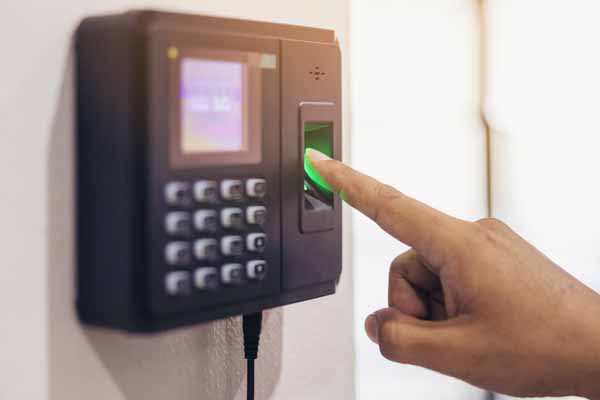
Introduction
In our rapidly evolving digital landscape, ensuring robust security measures has become paramount. Traditional methods such as passwords and PINs are no longer sufficient to protect sensitive information. Biometric security systems, utilizing unique physiological or behavioral traits, have emerged as a cutting-edge solution. This article explores the fascinating world of biometric security systems, delving into their mechanisms, applications, advantages, challenges, and the future they promise in reshaping our security paradigms.
I. Understanding Biometric Security Systems
Definition and Components:
Biometric security systems utilize biological or behavioral characteristics, such as fingerprints, facial features, voice patterns, or iris scans, to authenticate and verify the identity of individuals. These unique identifiers serve as the keys to unlock secured systems, devices, or information.
Biometric Modalities:
Biometric systems encompass various modalities. Fingerprint recognition, the most common, analyzes unique patterns on a person’s fingertip. Facial recognition identifies individuals based on facial features, while iris and retina scans focus on the unique patterns in the eye. Other modalities include voice recognition, palm prints, and even behavioral
traits like typing patterns or gait recognition.
II. Applications of Biometric Security Systems
Access Control and Identity Verification:
Biometric systems are widely employed for access control in various sectors, including corporate environments, government agencies, and educational institutions. They ensure only authorized personnel gain access to restricted areas, enhancing overall security.
Mobile Devices and Payments:
Biometric authentication has become standard in smartphones and tablets. Devices use fingerprints, facial recognition, or iris scans to unlock screens and authorize transactions, providing a convenient and secure user experience.
Border Control and Immigration:
Biometric technologies are instrumental in enhancing border security. They enable rapid and accurate identification of travelers, ensuring efficient immigration processes and reducing the risk of identity fraud or unauthorized entry.
Financial Services:
Banks and financial institutions utilize biometric authentication to secure online banking, ATMs, and financial transactions. Biometric verification enhances the security of transactions, safeguarding customers’ accounts and sensitive financial information.
Healthcare and Patient Identification:
Biometric systems are employed in healthcare to accurately identify patients and match them with their medical records. This prevents medical errors, enhances patient safety, and ensures the confidentiality of medical information.
III. Advantages and Challenges of Biometric Security Systems
Advantages:
Uniqueness and Accuracy: Biometric traits are unique to individuals, ensuring high accuracy in identification.
Convenience: Biometric authentication is seamless and convenient for users, eliminating the need to remember passwords or carry access cards.
Security: Biometric data is difficult to forge, enhancing overall security and reducing the risk of unauthorized access.
Integration: Biometric systems can be seamlessly integrated into existing security infrastructure, enhancing overall efficiency.
Challenges:
Privacy Concerns: The collection and storage of biometric data raise privacy concerns, necessitating stringent regulations and secure storage methods.
Spoofing and Hacking: Biometric systems are susceptible to spoofing attempts, where attackers use artificial means to deceive the system. Continuous advancements are required to counter such threats.
Standardization: The absence of universal standards can lead to interoperability issues between different biometric systems and devices.
IV. The Future of Biometric Security Systems
Multi-Modal Biometrics: Future systems will likely combine multiple biometric modalities for enhanced accuracy and security. Multi-modal biometrics, such as fingerprint and facial recognition, provide an extra layer of authentication.
Behavioral Biometrics: Behavioral traits, including keystroke dynamics, mouse movements, and voice patterns, will gain prominence. These unique behavioral characteristics offer additional layers of security, especially in online environments.
Artificial Intelligence and Machine Learning: AI and machine learning algorithms will play a significant role in improving biometric systems. These technologies enhance accuracy, identify irregular patterns, and adapt to evolving security threats.
Biometrics in IoT Devices: Biometric security will extend to IoT devices, ensuring that smart homes, wearable devices, and connected appliances are protected. Biometric authentication will become integral to the Internet of Things ecosystem.
Conclusion
Biometric security systems represent a transformative leap in the realm of security. Their ability to accurately identify individuals through unique biological or behavioral traits has revolutionized access control, authentication processes, and data protection. While challenges such as privacy concerns and the need for standardization persist, continuous advancements in technology, coupled with robust regulations, promise a future where biometric security systems become even more sophisticated, secure, and integral to our digital lives. As we move forward, embracing and innovating within the realm of biometrics will be fundamental to building a safer, more secure digital world for generations to come.
